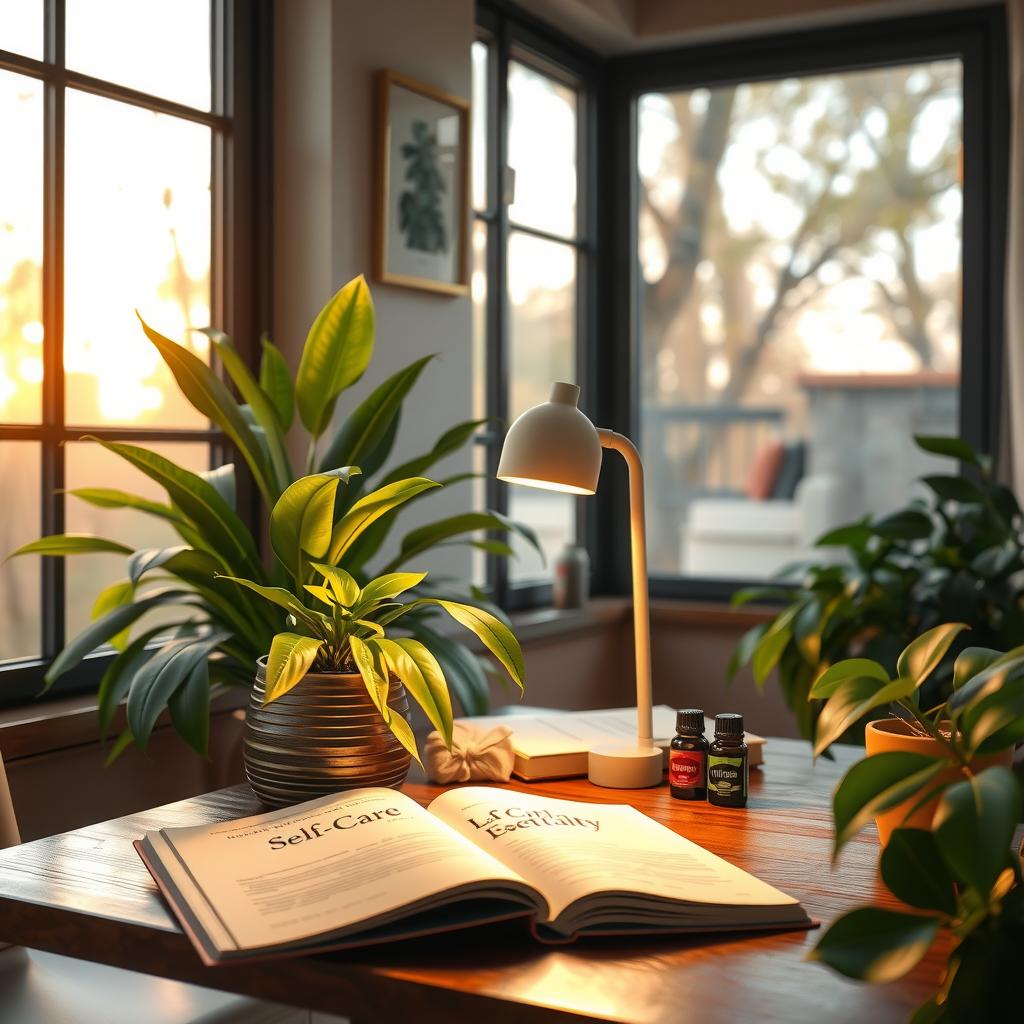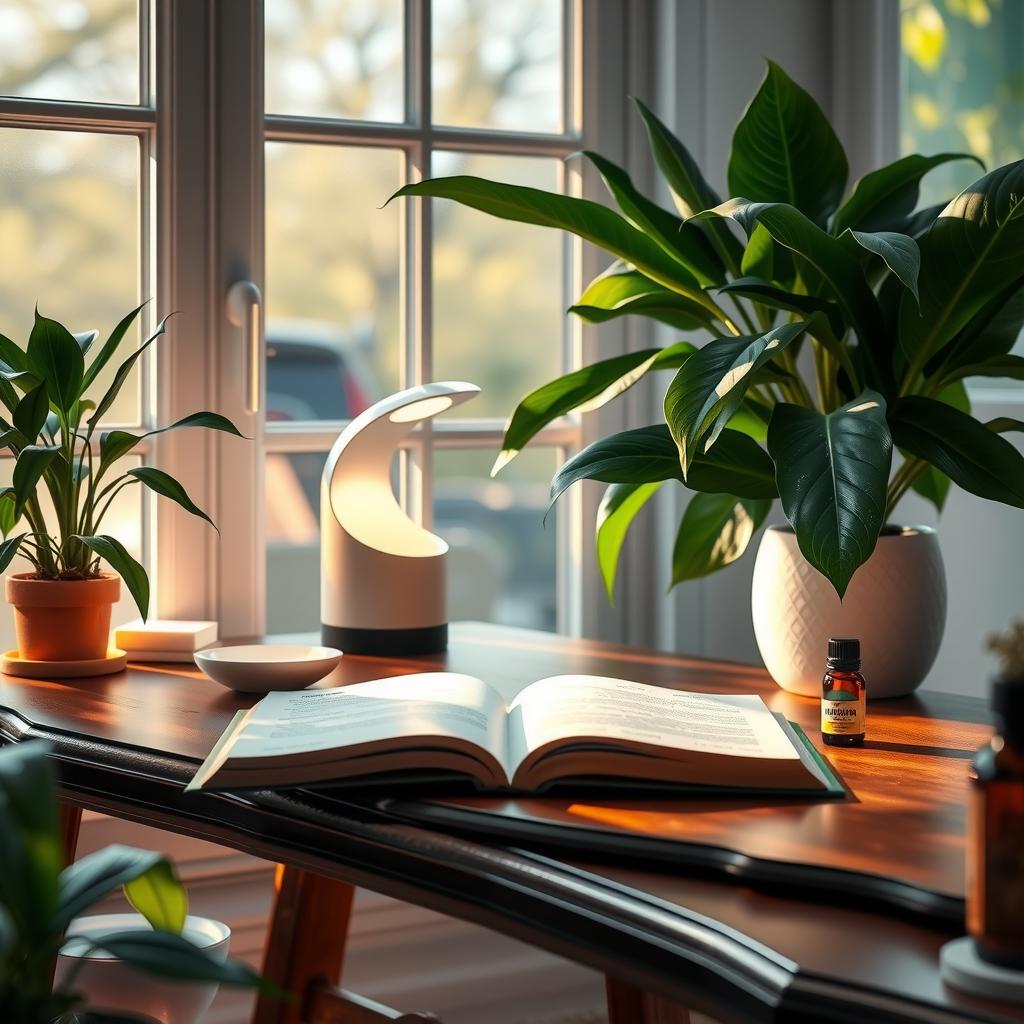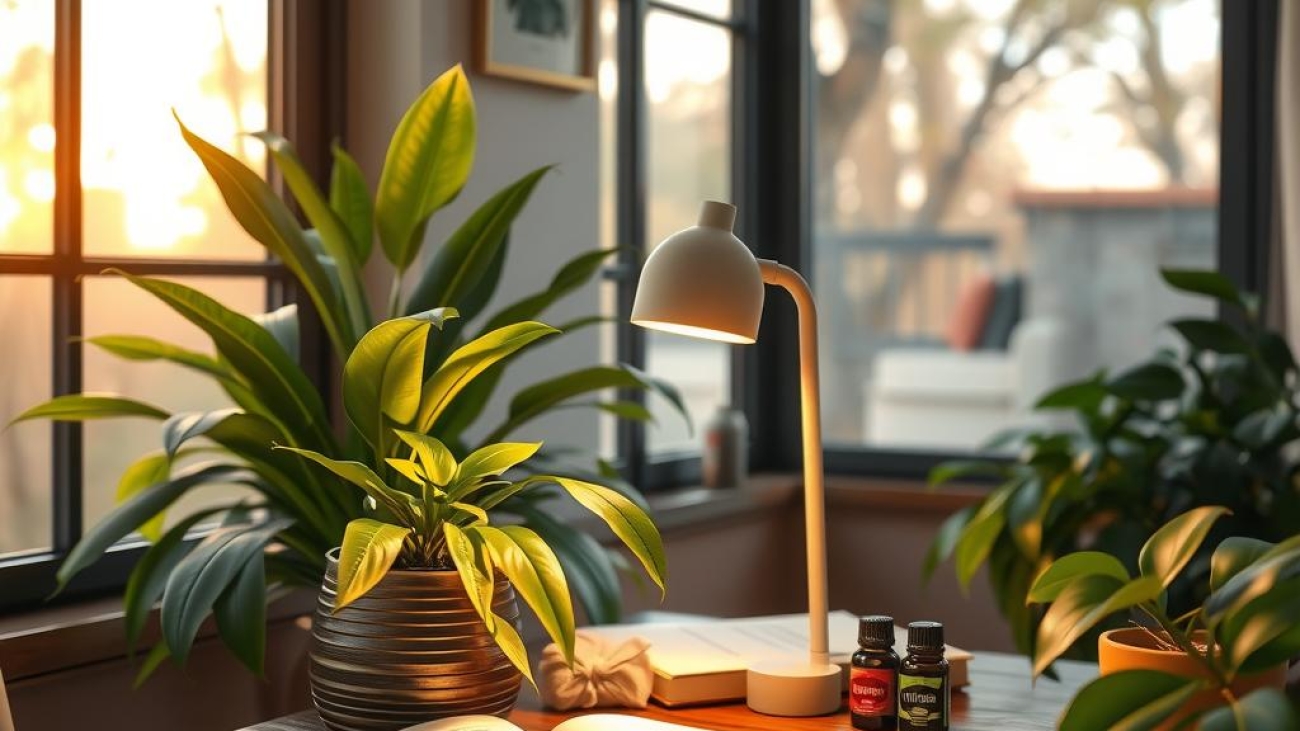As the days grow shorter and the clouds roll in, many individuals find themselves grappling with feelings of lethargy and sadness. Have you ever noticed how your mood seems to plummet during the winter months? This phenomenon is often linked to Seasonal Affective Disorder (SAD), a condition that affects countless people each year. Fortunately, there’s a beacon of hope: light therapy lamps. These innovative devices have emerged as effective mental health solutions, providing much-needed light exposure that can work wonders for mood improvement.
Understanding how to maximize the benefits of a light therapy lamp involves more than just plugging it in; proper lamp placement and timing are crucial components that can significantly influence its effectiveness. In this comprehensive guide, readers will discover essential strategies for using their light therapy lamps strategically throughout their day. By optimizing placement—whether on a desk or near an armchair—and adhering to recommended timing practices, users can align their use of these lamps with their natural circadian rhythms.
The core value of this article lies in its actionable insights that empower individuals seeking wellness strategies against seasonal blues. Not only will we delve into optimal placement options for your light therapy lamp, but we’ll also discuss when and how long you should be exposed to light for maximum benefit. With proper guidance, incorporating light therapy into daily routines becomes simple and straightforward.
Are you ready to transform those dreary days? By following this detailed guide on lamp placement and timing for your light therapy lamp, individuals will be well-equipped to combat SAD symptoms effectively while enhancing overall mental well-being. As readers continue through this article, they’ll gain valuable knowledge designed not just to inform but also inspire action towards better mental health outcomes through thoughtful light exposure techniques.

Key Points:
-
Optimal Lamp Placement: Positioning your light therapy lamp effectively
Proper lamp placement is crucial for maximizing the benefits of a light therapy lamp. Users should consider placing the device at eye level and within a comfortable distance to ensure optimal light exposure. By positioning it in a way that minimizes glare while providing adequate illumination, individuals can enhance their experience with this innovative tool. This strategic approach not only combats feelings associated with seasonal affective disorder (SAD) but also contributes to improved mood and energy levels. -
Timing Guide for Effective Use: Aligning Light Exposure with Daily Routines
Understanding when to use the light therapy lamp is equally important as how it’s placed. A well-structured timing guide suggests utilizing the lamp during morning hours to effectively regulate one’s circadian rhythm. By integrating this practice into daily routines, users can harness the full potential of light exposure, thereby promoting better mental health solutions throughout darker days. Consistency in usage aligns seamlessly with individual lifestyles, making it easier to combat seasonal mood fluctuations. -
Enhancing Wellness Strategies: Incorporating Light Therapy into Daily Life
Incorporating a light therapy lamp into wellness strategies can lead to significant improvements in overall well-being. Individuals are encouraged to create an inviting environment where using the lamp becomes a pleasurable ritual rather than a chore. Whether through setting reminders or creating cozy spaces dedicated to its use, these tailored approaches foster regular interaction with light exposure that supports mood improvement and emotional resilience against SAD symptoms during challenging seasons.

Understanding Seasonal Affective Disorder: Causes and Symptoms
Exploring the Mental Health Challenges of Changing Seasons
Seasonal Affective Disorder (SAD) is a type of depression that typically occurs during specific seasons, most commonly in winter when daylight hours are shorter. The abrupt change in light exposure can significantly impact individuals’ mental health, leading to symptoms such as fatigue, irritability, and difficulty concentrating. For those who experience SAD, it is essential to recognize the relationship between reduced sunlight and circadian rhythm disruption. As daylight diminishes during colder months, many find their mood declines correspondingly. This phenomenon underscores the importance of exploring effective wellness strategies for managing seasonal depression.
One promising solution for mitigating the effects of SAD is utilizing a Light therapy lamp designed to simulate natural sunlight. These lamps provide bright light exposure that mimics outdoor lighting conditions and can help regulate sleep patterns by influencing melatonin production—an essential hormone linked with sleep-wake cycles. Proper lamp placement plays a crucial role in ensuring maximum effectiveness; positioning the lamp at eye level while sitting nearby allows for optimal absorption of light without straining one’s eyes. Additionally, adhering to a timing guide that suggests using these lamps in the morning can prove beneficial; research indicates this timing aligns best with improving mood and energy levels throughout the day.
The symptoms associated with Seasonal Affective Disorder often lead individuals into a cycle where decreased motivation fosters social withdrawal or neglect of self-care routines—further exacerbating depressive feelings. Incorporating daily sessions with a Light therapy lamp into one’s routine provides an accessible method for combating these challenges head-on by enhancing overall light exposure. Consistent use can result in significant improvements not only in mood but also productivity levels as individuals reclaim their motivation during darker months.
Recognizing signs like changes in appetite or sleeping patterns is vital for identifying SAD early on so individuals can seek appropriate interventions promptly rather than allowing it to escalate over time. Utilizing mental health solutions such as cognitive behavioral therapy (CBT) alongside regular use of a Light therapy lamp may offer additional support tailored specifically towards overcoming seasonal challenges related to mental well-being. By fostering awareness about how environmental changes influence emotional health through tools like these lamps combined with proactive therapeutic measures means patients are better equipped to manage their seasonal affective disorder effectively.
In summary, understanding Seasonal Affective Disorder encompasses recognizing its causes tied closely with changing seasons along with adopting practical strategies aimed at alleviating symptoms experienced by affected individuals year after year amidst shifting weather patterns and daily life demands alike.
The Science Behind Light Therapy
Understanding How Light Exposure Benefits Mental Health
Light therapy, particularly through the use of a Light therapy lamp, has emerged as an effective strategy for alleviating symptoms associated with Seasonal Affective Disorder (SAD) and enhancing overall wellness. Seasonal Affective Disorder is a type of depression that occurs at certain times of the year, usually during fall and winter when natural sunlight exposure decreases significantly. This lack of light can disrupt an individual’s circadian rhythm—an internal clock regulating sleep-wake cycles—and subsequently lead to mood fluctuations, fatigue, and other mental health issues. By mimicking natural sunlight, a Light therapy lamp provides essential light exposure that helps to regulate these rhythms effectively.
The mechanism behind this therapeutic approach involves specific wavelengths of light emitted from these lamps. Research indicates that bright white or blue light may stimulate receptors in the eyes that are directly linked to mood regulation areas in the brain. When individuals incorporate regular sessions with a Light therapy lamp, they often report improvements in their overall mood and energy levels. For optimal results, proper timing and placement are crucial; experts recommend using the lamp for about 20-30 minutes each morning while positioned approximately 16 to 24 inches away from one’s face.
In addition to addressing SAD symptoms, incorporating a Light therapy lamp into one’s daily routine serves as part of broader wellness strategies aimed at improving mental health outcomes throughout all seasons. Regular exposure not only elevates serotonin levels but also aids in vitamin D synthesis—both vital components in maintaining emotional stability and resilience against stressors found in everyday life. As people seek out innovative mental health solutions today, understanding how effective light exposure can be through devices like these lamps becomes increasingly important.
Moreover, it is essential for users to remain consistent with their usage patterns; irregularity can lessen effectiveness over time. Setting reminders or integrating sessions within existing routines could promote adherence while amplifying benefits derived from enhanced light exposure via a Light therapy lamp. With growing awareness around mental well-being coupled with lifestyle adjustments influenced by seasonal changes—including reduced daylight hours—light therapy stands out as an accessible method for fostering positive psychological states regardless of external conditions.
In conclusion, embracing tools like the Light therapy lamp not only addresses immediate concerns related to SAD but offers long-term advantages by reinforcing healthy circadian rhythms critical for emotional balance all year round. These insights reinforce why such interventions are gaining traction among those seeking proactive measures towards improved mental health.
Enhancing Your Light Therapy Practice
Strategic Placement for Optimal Results
To truly harness the benefits of a Light therapy lamp, strategic placement is essential. Positioning the lamp at eye level and within close proximity—usually around 16 to 24 inches away from your face—can significantly improve light exposure, thereby enhancing its effectiveness in alleviating symptoms associated with seasonal affective disorder (SAD) and boosting overall mood. Additionally, it’s important that users maintain a consistent routine; therefore, placing the lamp in a location where it’s easily accessible can encourage regular use. A well-placed Light therapy lamp should allow for direct light exposure without causing glare or discomfort to the eyes, as this could detract from its therapeutic potential. Moreover, incorporating your light therapy sessions into daily activities such as reading or working can make treatment feel less like a chore and more like an integrated part of life.
Timing Guide for Maximum Effectiveness
Timing plays an equally crucial role in optimizing light therapy experiences. The best time to use a Light therapy lamp is typically in the morning shortly after waking up when natural sunlight is often scarce during winter months. This timing helps regulate circadian rhythms, which are vital for maintaining healthy sleep patterns and overall mental wellness. Research indicates that engaging with bright light early in the day can enhance alertness and improve mood throughout daily tasks while combating feelings of lethargy often experienced during darker seasons. Individuals struggling with their mental health should consider creating a morning ritual centered around their light exposure, ideally using their light therapy device before breakfast or any other scheduled commitments.
Wellness Strategies Through Consistency
Consistency remains key when utilizing techniques like those provided by your Light therapy lamp within broader wellness strategies aimed at improving mental health outcomes. Users are encouraged to establish specific times each day dedicated solely to their light exposure, making it easier to track progress over weeks or months while also fostering accountability towards self-care practices designed for mood improvement. By setting reminders on personal devices or marking off dedicated time slots on calendars, individuals may find greater motivation to stick with their routines despite competing responsibilities or distractions throughout the day. Ultimately, integrating these habits not only optimizes results but also reinforces positive associations between regular use of light therapies and enhanced emotional wellbeing—an invaluable consideration for anyone seeking effective mental health solutions amidst challenging circumstances associated with fluctuating daylight hours.
Frequently Asked Questions:
Q: How does a light therapy lamp help with seasonal affective disorder (SAD)?
A: A light therapy lamp mimics natural sunlight, which can alleviate symptoms of SAD by enhancing mood and energy levels. The exposure to bright light helps regulate the body’s internal clock, promoting better sleep patterns and overall wellness.
Q: What is the best lamp placement for maximizing the effectiveness of a light therapy lamp?
A: Optimal lamp placement involves positioning the light therapy lamp at eye level and about 12-24 inches away from where you sit. This setup ensures that users receive adequate light exposure without straining their eyes, maximizing mood improvement throughout daily activities.
Q: When is the ideal time to use a light therapy lamp for maximum benefit?
A: Timing is crucial when using a light therapy lamp. It’s best utilized in the morning upon waking or during mid-afternoon hours when energy dips are common. Consistent timing helps regulate your circadian rhythm effectively and enhances mental health solutions tailored to individual routines.

Add a Comment